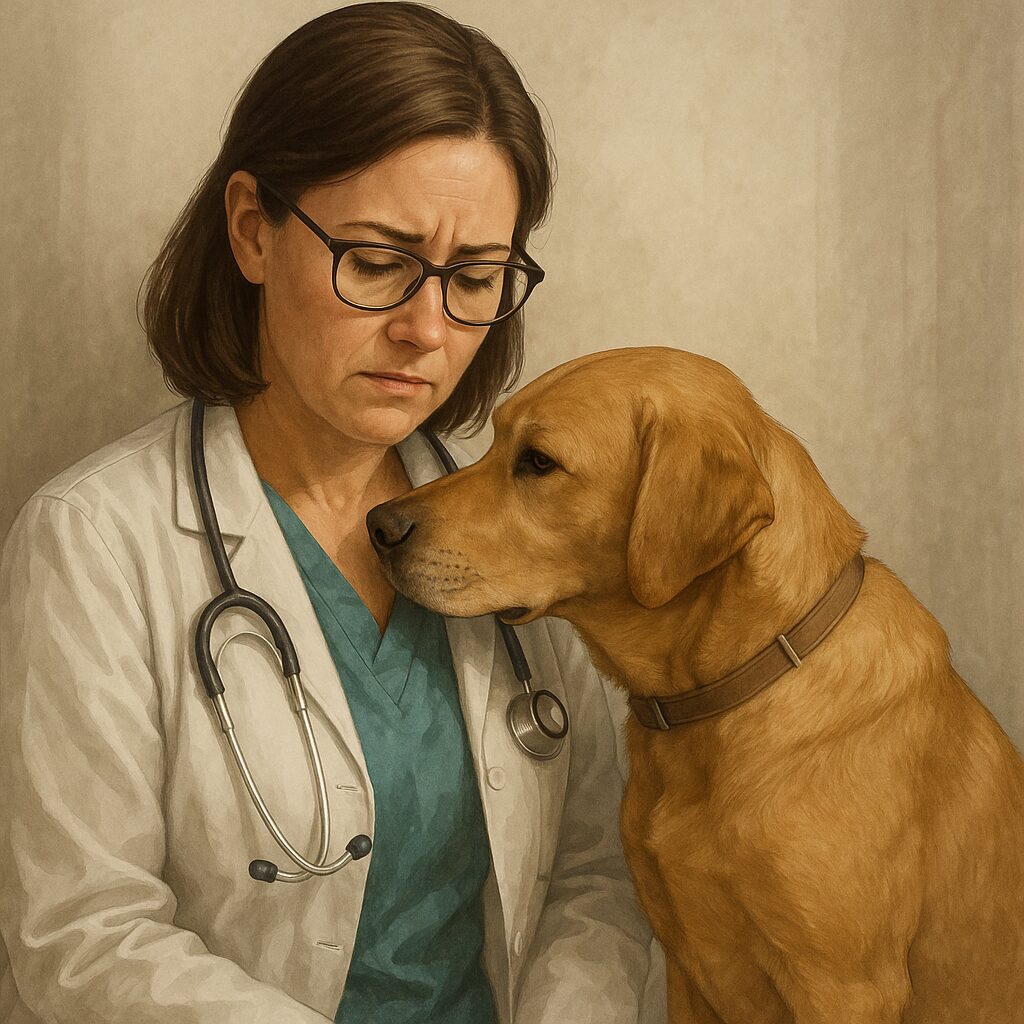Dogs have always amazed us with their loyalty, intelligence, and sharp senses. But one of the most fascinating abilities attributed to dogs is their potential to detect cancer in humans — sometimes even before any clinical symptoms appear. With their extraordinary sense of smell, some dogs seem capable of picking up on subtle changes in the human body that science is only beginning to understand.
In this article, we’ll explore the science behind dogs detecting cancer, how they are trained for this purpose, and what the future holds for canine-assisted medical detection.
How dogs’ sense of smell works
A dog’s nose is an incredible tool. Compared to humans, dogs have:
- Up to 300 million olfactory receptors in their noses (humans have about 5 million).
- A sense of smell that is estimated to be 10,000 to 100,000 times more sensitive than ours.
- The ability to separate different odors, even when they are layered or masked.
Dogs can detect scents at concentrations as low as one part per trillion — equivalent to detecting a single drop of liquid in 20 Olympic-sized swimming pools.
This superpower allows them to sniff out drugs, explosives, missing persons, and yes, even potential signs of disease like cancer.
The science behind dogs detecting cancer
Several scientific studies have demonstrated that dogs can detect certain types of cancer by smelling samples from humans, including:
- Breath
- Urine
- Blood
- Skin
- Sweat
Researchers believe that cancer cells produce volatile organic compounds (VOCs) — unique chemicals released by tumors — that dogs can identify even at very low concentrations.
Published studies have shown promising results:
- Dogs trained to detect lung cancer through breath samples have shown detection accuracy rates as high as 97%.
- Some studies on breast cancer and prostate cancer have reported dogs identifying cancerous samples with remarkable consistency.
- Dogs have even detected colorectal cancer and melanoma based on breath or skin samples.
However, it’s important to note that results can vary depending on training methods, individual dog capabilities, and sample quality.
How dogs are trained to detect cancer
Training a medical detection dog involves many of the same techniques used in other scent work, but with a medical focus.
The training process generally includes:
- Introducing the dog to samples from healthy individuals and those with cancer.
- Teaching the dog to alert (such as sitting or pawing) when they detect the scent associated with cancer.
- Rewarding correct identification with treats or toys.
- Using double-blind studies to ensure the dog is responding to the scent, not human cues.
Training can take six months to two years, depending on the dog’s aptitude and the type of cancer being targeted.
Breeds commonly used for medical detection include:
- Labrador retrievers
- Golden retrievers
- German shepherds
- Belgian malinois
- Poodles
However, any dog with a strong nose, good work ethic, and motivation can potentially be trained.
Real-world examples of cancer-sniffing dogs
There are many documented cases of dogs alerting their owners to health problems, even without formal training.
Stories include:
- A woman’s dog persistently sniffed and pawed at a mole on her leg, which later turned out to be melanoma.
- A man’s dog refused to leave his side and kept nudging his chest; a subsequent checkup revealed early-stage lung cancer.
- Several clinical programs now use trained dogs in hospitals and research centers to assist in early cancer detection trials.
While these stories are compelling, they also highlight the need for rigorous scientific study to separate anecdotal evidence from consistent, repeatable results.
Limitations and challenges
Despite the excitement around cancer-sniffing dogs, there are significant challenges:
- Variability: Not all dogs perform at the same level, and their accuracy can vary based on the training environment and sample types.
- Scalability: Training enough dogs to meet medical demand is difficult and time-consuming.
- Regulation: There are currently no standardized protocols for training or certifying medical detection dogs.
- Human error: Handlers may unconsciously influence dogs if the process is not strictly blind.
For these reasons, while dogs show promise, they are not currently used as a sole diagnostic tool in clinical settings.
The future of canine cancer detection
Scientists are studying how to combine what dogs detect with modern technology.
Some areas of future development include:
- Creating electronic noses (e-noses) that mimic a dog’s olfactory system.
- Identifying specific biomarkers dogs are detecting to develop non-invasive screening tests.
- Integrating trained dogs into early screening programs alongside traditional diagnostics.
In the meantime, ongoing research partnerships between veterinarians, doctors, and scent training experts continue to push the boundaries of what is possible.
Should you rely on your dog to detect cancer?
While it’s fascinating and sometimes life-saving when dogs alert their owners to health changes, it’s important not to rely on a dog’s behavior as a primary diagnostic method.
If your dog shows unusual behavior toward a particular area of your body — persistent sniffing, licking, nudging, or concern — it’s wise to consult your doctor. Early detection is crucial with any form of cancer, and medical tests, not canine intuition, should guide diagnosis and treatment.
Dogs: our companions, protectors, and maybe lifesavers
Dogs already enrich our lives with companionship, unconditional love, and loyalty. Their potential role in the early detection of diseases like cancer adds yet another layer to their incredible relationship with humans.
As science continues to explore and validate these abilities, one thing remains clear: dogs are extraordinary partners — in health, in life, and perhaps, in saving lives too.

